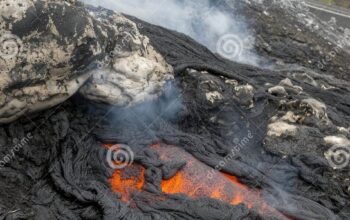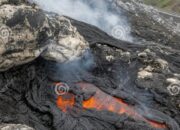Biodiversity, the kaleidoscopic variety of life that inhabits the Earth, plays an intricate and pivotal role in shaping the climate and mitigating the adverse effects associated with climate change. As we ponder this multifaceted relationship, one might ask: can a more diverse ecosystem actually act as a bulwark against the burgeoning threat of a changing climate? This question, steeped in complexity, propels us into an exploration of the synergies between biodiversity and climate stability.
The myriad interfaces where biodiversity and climate intersect begin with the concept of ecosystem services. Ecosystem services, defined as the benefits that humans derive from natural ecosystems, are profoundly influenced by biodiversity. A diverse array of species contributes to the resilience of ecosystems, thereby enhancing their capacity to withstand climatic shifts. For instance, forests enriched with various tree species not only sequester carbon dioxide, acting as significant carbon sinks, but also provide habitats that foster intricate food webs. The loss of biodiversity within these systems can compromise their ability to perform these critical functions effectively.
Moreover, biodiversity’s role in soil health cannot be overstated. Diverse soil biota, encompassing bacteria, fungi, and invertebrates, function synergistically to maintain soil structure and fertility. Healthy soils are paramount in the context of climate change because they play a crucial role in carbon sequestration. The carbon stored in soils is a substantial reservoir, estimated to contain more carbon than the atmosphere and all vegetation combined. This realization underscores the importance of preserving diverse microbial communities that enhance the soil’s ability to store carbon and contribute to diminishing atmospheric CO2 levels.
Conversely, the alteration of climate patterns poses dire threats to biodiversity itself. The phenomenon known as climate-induced habitat degradation can lead to the extinction of vulnerable species, thus initiating a pernicious cycle. As ecosystems destabilize, their ability to sequester carbon diminishes, further exacerbating climate change. This feedback loop is a daunting challenge that necessitates urgent attention from scientists and policymakers alike.
The interdependence of plants and animals within various ecosystems illustrates another dimension of this relationship. The intricate web of interactions—pollination, seed dispersal, and nutrient cycling—involves a plethora of species, each fulfilling a specific role that sustains ecosystem integrity. For example, bees, with their roles as primary pollinators, contribute immeasurably to food production and thus to human survival. The decline in pollinator populations can result in significant disruptions to crop yields, representing an indirect yet profound impact of biodiversity loss on food security amid changing climatic conditions.
In coastal ecosystems, the role of biodiversity in climate change mitigation is particularly pronounced. Coral reefs, for instance, are biodiversity hotspots that provide vital ecosystem services, including coastal protection from storm surges and erosion. Furthermore, seagrasses and mangroves, which constitute unique organisms of these ecosystems, serve as significant carbon sinks, storing carbon in their biomass and in the sediments below. The degradation of these vital habitats not only diminishes biodiversity but also releases stored carbon back into the atmosphere, contributing to the greenhouse effect.
Shifting towards the realm of climate adaptation, biodiversity also fosters greater resilience in ecosystems, enabling them to adapt to changing conditions. A diverse genetic pool within species facilitates adaptability, allowing populations to thrive despite climatic stressors such as increased temperatures or altered precipitation patterns. For instance, diverse agricultural systems are shown to yield greater productivity and stability under climate variability compared to monoculture systems. Such agricultural biodiversity can increase food security and nutrition, particularly in regions that are most susceptible to climate impacts.
However, the pursuit of maintaining and enhancing biodiversity is fraught with challenges. Urbanization, deforestation, and pollution are formidable adversaries against which biodiversity struggles to persevere. In the face of climate warming, the often sudden shifts in environmental conditions can outpace the evolutionary capacity of many species. Rapid habitat loss, driven predominantly by anthropogenic activities, exacerbates this plight and necessitates an immediate reevaluation of how societies engage with the natural world.
Researchers are increasingly advocating for an integrated approach to climate policy that acknowledges and incorporates the role of biodiversity. Ecological restoration and conservation efforts can significantly contribute to carbon sequestration while simultaneously preserving biodiversity. Initiatives such as reforestation, wetland restoration, and the protection of marine environments can create synergistic benefits that address both climate change and biodiversity loss.
The nexus of biodiversity and climate change presents a compelling challenge that transcends ecological science and delves into socio-economic realms. As biodiversity declines, the fabric of ecological interactions frays, leading to repercussions that extend beyond environmental degradation. Conversely, the conservation and promotion of biodiversity stand as formidable strategies that bolster climate resilience and enhance ecosystem services vital for human well-being. The complexity of this relationship invites us to reimagine our approach to environmental stewardship, understanding that fostering biodiversity is not merely an act of conservation but a fundamental imperative for sustaining life on Earth amidst the growing specter of climate change.












